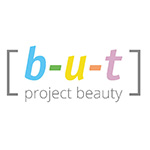How we perceive beauty corresponds not only with our level of well-being but also with that of others and, on an even larger scale, with a thriving planet. Irrespective of how we define it, our inner need for beauty is a powerful motivating force, which to a serious extent can drive our actions.
At first sight, beauty doesn’t have to do much with sustainability, maybe even more with the opposite: mindless consumption. The word beauty is pervasive throughout all levels of society, but in the public area, it is mostly known in connection with art, design, fashion, and cosmetics, all types of beauty that are visually perceived.
A previous blog, mentioned that the Sustainable Development Goals include no reference whatsoever to the role beauty plays in our lives, but concluded that inner drives anyway are no focus area in the SDG’s. The 3rd SDG (Good Health & Well-being) suggests otherwise but forgets to make this more tangible by including a credible indicator.
In 2021 a Stockholm-based collective started the Inner Development Goals Initiative, a purely mentally based framework of “science-based skills and qualities that help us to live purposeful, sustainable, and productive lives.”. The framework is based on five mental capacities that are seen as crucial for enduring change toward the SDG’s: 1. Being, 2. Thinking, 3. Relating, 4. Collaborating, and 5. Action. Together they aim to help us to better identify, understand, integrate, develop, and communicate the inner skills needed for sustainable development.
The IDG framework also doesn’t mention beauty, but since every single one of the five capacities is grounded in several mental skills, connecting the way we deal with beauty in our lives here is more fruitful. The core of IDG framework is build on intangible non-behavioral emotional skills, like self-awareness, sense making, humility, trust, and optimism.
In an article published in the publication ‘Understanding Happiness’ I coined the idea that we should stop looking at beauty as a quality of an object or a person, but maybe better view it as a force, an aspect of what is happening in the space between the perceiver of beauty the thing that is labeled as beautiful: a force field view. By seeing beauty as a force, it could become easier to shift attention away from the countless number of outside stimuli, and back to how we deal with these, and recognizing the role beauty plays in our life.
The concept of force is, in a metaphorical sense’ also present in one of the IDG qualities, namely the first one: Being. This ‘Being’ element is based on five skils, the first one called ‘Inner Compass.’
In the nautical world, a compass is ‘a device that shows the cardinal directions used for navigation and geographic orientation.” Workings of a compass are based on the earth’s magnetic force field. Although maybe somewhat far-fetched, viewing beauty as a force that seriously influences our path through life, for sure opens a connection with the ‘Inner Compass’ quality of the IDG framework., and thus, from a wider perspective, also with the Sustainable Development Goals.
An example: how we dress ourselves, the way we deal with the beauty described as fashion, has serious environmental impact. Another one: if we are able to see inner beauty, or often focus on outer beauty also has its consequences for the well-being of ourselves and of our fellow human being. And finally: the ability to see beauty in nature for sure has an impact on how we walk through life.
On the path to a regenerative world, beauty can guide us or mislead us. Re-thinking what this wonderful but often also complicated phenomenon means, might help us reflect in which direction we are heading.

Leave a Reply
You must be logged in to post a comment.